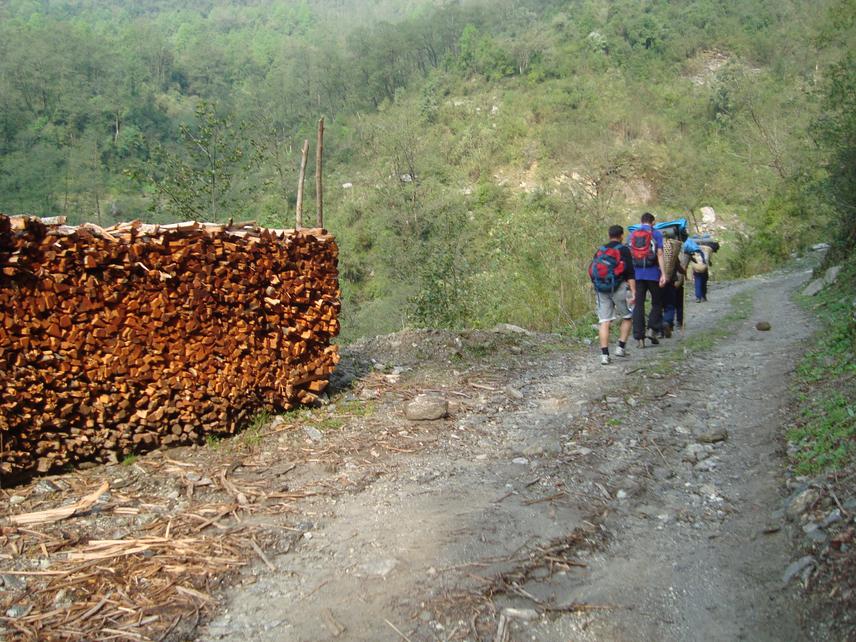Kamal Thapa
Other projects
1 Jul 2014
Assessment of Benefits and Evaluation of Ecosystem Services in Langtang National Park, Nepal
10 Jul 2020
Local People, Nature-Based Tourism and Protected Areas in Nepal: Implication for Conservation
Protected Areas (PAs) are the store house of rich bio-diversity and are also the source of livelihoods for adjacent community. Park People relation determines the fate of any PAs. This study aims to explore the broad spectrum of participation in conservation practices, resource usage and conflict pattern in Annapurna Conservation Area & Parsa Wildlife Reserve, Nepal.

Firewood is the common resources offered by Annapurna Conservation Area to locals. On the background tourists returning from Sikles (tourist) village.
23.23 % of Nepal’s total area has been designated as Protected Areas (PAs), including Buffer Zones, of different categories in various physiographic and ecological zones (GoN, 2012). After the establishment of PAs, especially National Park and Wildlife Reserve, people’s traditional resource use right has been ignored and even people were evicted from their ancestral place of residence. But, the management regime of Conservation Area provides the opportunities for people to live within its territory. Quite often there is a struggle over usage of park finite resources between local people and authority. Further, crop and property damage, livestock depredation, human injuries/casualties by the wildlife of PAs threatened the livelihood of local people, making them vulnerable to poverty. This has created the park people conflict and seen as major threats to achieve long term conservation of biodiversity.
Conflicts, resource usage, ecotourism/recreation and involvement of local people in conservation are the key features of contemporary PA management. Therefore, there is growing need to identify the type/degree of conflicts, level of dependency on the park and degree of local participation in conservation measures. Moreover, there is the need to explore if the PAs contribute to reduce or produce poverty to the local population.
This study involves two different types of PAs situated in different physiographic and ecological zones; therefore this will make a comparative study between them. Parsa Wildlife Reserve (499 km2) (IUCN PA category IV) is a lowland and Annapurna Conservation Area (7629 km2) (IUCN PA category VI) is a mountain PA. Both of these PAs are part of the important landscape level conservation, initiated by government and conservation partners.
The specific objectives of this study are to:
- Identify conflicts between the park and people regarding usage of resources and the quantification of property damage done by wildlife.
- Identify the types and intensity of resources used and the villagers’ level of dependency on park resources.
- Identify the local people’s attitude towards park and park authority attitude towards local people.
- To assess conservation activities adopted by local communities and authority.
- To come with recommendation for the sustainable management of PAs.